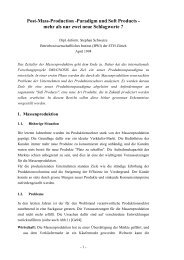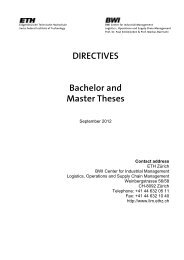The China Venture
The China Venture
The China Venture
You also want an ePaper? Increase the reach of your titles
YUMPU automatically turns print PDFs into web optimized ePapers that Google loves.
experience in operating production facilities outside Europe before it entered into joint<br />
venture negotiations in <strong>China</strong>.<br />
Planning for the foundation of a production joint venture started in 1993 and progressed<br />
rapidly, even though CGC's management did not have any relevant experience of doing<br />
business or negotiating in <strong>China</strong>. <strong>The</strong> goals of the company were straight forward. It wanted<br />
to penetrate the market quickly, starting with sales in <strong>China</strong>'s most promising city, Shanghai.<br />
Plans were short-term with expectations of breaking even in the second year of operations.<br />
During the planning and build up phase, no consideration was given to the eventuality of a<br />
failure. No exit strategy was therefore discussed.<br />
<strong>The</strong> company decided quickly to enter the market via a joint venture agreement with a local<br />
partner. Negotiations were swift as both partners wanted to start doing business quickly. <strong>The</strong><br />
contract was considered very favourable to CGC, giving it 60% of voting rights, as well as<br />
management authority. <strong>The</strong> partner, a state -owned business, contributed land and buildings.<br />
During the negotiations the partner had insisted that the joint venture would take on people<br />
from the partner company if they had appropriate experience for their new jobs.<br />
<strong>The</strong> newly formed joint venture company achieved a satisfactory product quality very quickly<br />
through the utilisation of European machinery. Even more successful were the marketing<br />
efforts of the company. According to their own estimation, CGC achieved a brand recognition<br />
rate in Shanghai of over 90% within two years of operation.<br />
<strong>The</strong>se marketing efforts and successes, however, were not mirrored in similarly impressive<br />
sales figures. This was mainly true because distribution did not work at all. Like what<br />
happened to so many other foreign companies, CGC's partner did not live up to expectations.<br />
At the beginning, the joint venture company relied mostly on the partner's distribution<br />
channels which proved to be so inadequate, that demand could not even be met in the city of<br />
Shanghai. Further expansion to other regions seemed completely beyond the capability of the<br />
company.<br />
Apart from distribution, the company also faced major cost problems. Production turned out<br />
to be much more expensive than originally planned. Personnel costs were much higher than<br />
forecast. <strong>The</strong> reason for the high personnel costs could be traced bac k to the hiring of too<br />
many and too inefficient workers from the partner company. CGC hoped that changing the<br />
general manager, who had the ultimate authority over hiring people, would cure the problem.<br />
However, the partner company continued to exert pressure on the new general manager to hire<br />
more and more employees.<br />
145






